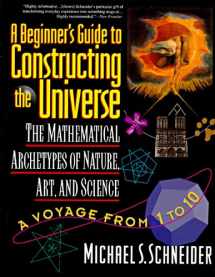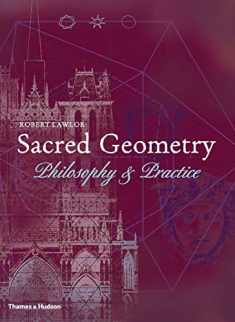
A Beginner's Guide to Constructing the Universe: Mathematical Archetypes of Nature, Art, and Science
ISBN-13:
9780060926717
ISBN-10:
0060926716
Edition:
First Edition
Author:
Michael S. Schneider
Publication date:
1995
Publisher:
HarperPerennial
Format:
Paperback
351 pages
Category:
Astronomy
,
Astronomy & Space Science
,
Astrophysics
,
Physics
,
History & Philosophy
,
Quantum Theory
FREE US shipping
on ALL non-marketplace orders
Marketplace
from $17.37
USD
Marketplace offers
Seller
Condition
Note
Seller
Condition
New
Brand New! Not overstocks! Brand New direct from the publisher! Ships in sturdy cardboard packaging.
Book details
ISBN-13:
9780060926717
ISBN-10:
0060926716
Edition:
First Edition
Author:
Michael S. Schneider
Publication date:
1995
Publisher:
HarperPerennial
Format:
Paperback
351 pages
Category:
Astronomy
,
Astronomy & Space Science
,
Astrophysics
,
Physics
,
History & Philosophy
,
Quantum Theory
Summary
A Beginner's Guide to Constructing the Universe: Mathematical Archetypes of Nature, Art, and Science (ISBN-13: 9780060926717 and ISBN-10: 0060926716), written by authors
Michael S. Schneider, was published by HarperPerennial in 1995.
With an overall rating of 4.2 stars, it's a notable title among other
Astronomy
(Astronomy & Space Science, Astrophysics, Physics, History & Philosophy, Quantum Theory) books. You can easily purchase or rent A Beginner's Guide to Constructing the Universe: Mathematical Archetypes of Nature, Art, and Science (Paperback) from BooksRun,
along with many other new and used
Astronomy
books
and textbooks.
And, if you're looking to sell your copy, our current buyback offer is $0.37.
Description
The Universe May Be a Mystery,
But It's No Secret
Michael Schneider leads us on a spectacular, lavishly illustrated journey along the numbers one through ten to explore the mathematical principles made visible in flowers, shells, crystals, plants, and the human body, expressed in the symbolic language of folk sayings and fairy tales, myth and religion, art and architecture. This is a new view of mathematics, not the one we learned at school but a comprehensive guide to the patterns that recur through the universe and underlie human affairs. A Beginner's Guide to Constructing, the Universe shows you:
- Why cans, pizza, and manhole covers are round.
- Why one and two weren't considered numbers by the ancient Greeks.
- Why squares show up so often in goddess art and board games.
- What property makes the spiral the most widespread shape in nature, from embryos and hair curls to hurricanes and galaxies.
- How the human body shares the design of a bean plant and the solar system.
- How a snowflake is like Stonehenge, and a beehive like a calendar.
- How our ten fingers hold the secrets of both a lobster and a cathedral.
- And much more.


We would LOVE it if you could help us and other readers by reviewing the book
Book review

Congratulations! We have received your book review.
{user}
{createdAt}
by {truncated_author}




